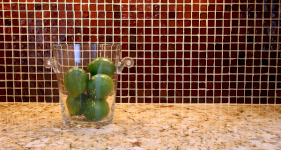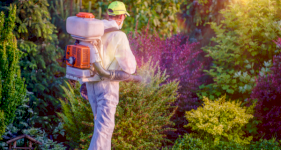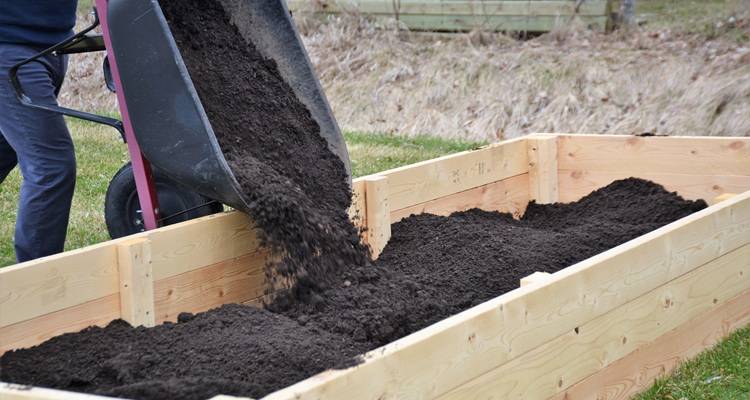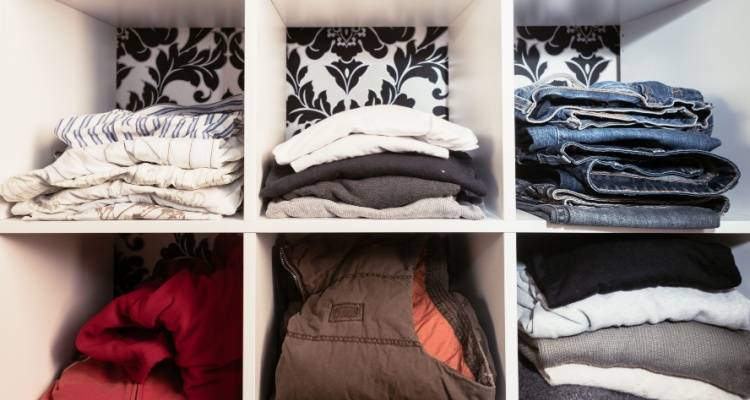How to Get Your Home Ready for Your First Pet
Getting your first pet is an exciting time, but it can also be confusing. Understanding how to get your home ready for your furry friend’s arrival is essential to making them feel right at home and safe.
We've created a guide that's jam-packed with information for the first-time pet owner, from the first stages of what to consider when adopting, to when the big day finally arrives, and you're bringing your pet home.
Even if you've owned a pet before, we're sure you'll find some handy advice to care for your new animal! You'll discover all the ins-and-outs of what your new pet requires, including how to make your home pet-friendly, how much to feed your new pet and what essential supplies you'll need to purchase before they arrive.
In this guide, you'll find all the ins-and-outs of what your new pet requires, including:
- How to make your home pet-friendly.
- How much to feed your new pet.
- What essential supplies you'll need to purchase before they arrive.

New Dog Owner Guide
For this section, we will analyse different steps and scenarios that might apply for bringing home your first dog and how to prepare for a dog. Such steps might include training a puppy, preparing your home for a puppy and alternatively preparing your home for an adult dog.
Things to Consider Before Getting a Dog or Puppy
There are many considerations you will need to look at before introducing a new puppy or dog into your home.
Commitment
Commitment when it comes to a dog is two-fold. On the one hand, you'll need to be committed to regular tasks such as taking care of your dog on a day to day basis, training him/her (if he/she is a puppy or an adult dog without training) and with regards to other aspects of having a dog or puppy such as taking them for walks.
Further, puppies will have unique needs such as the fact that you can't leave them on their own for more than three or four hours at a time. Then, there is also the long-term commitment of having a dog. You'll not only need time throughout a given day and week to meet your dog’s needs but also the willingness to remain committed to taking care of your dog for the years to come. Also, this may include different types of commitments as your dog ages and vet visits should also be expected at some stage.
Expenses
It will likely cost you over £1,000 per year to take care of a dog. Of course, the primary expense will usually be food, including dog treats. Beyond that, you'll need a dog bed for him/her to sleep in and some dog toys to keep them entertained. You also need to consider other equipment such as a leash or/and dog harness for walks.
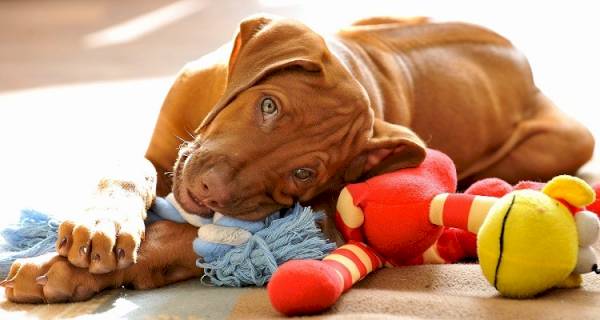
Further, your dog may require a grooming service unless you are confident enough to perform this by yourself and if your dog develops problems such as fleas, then you'll need to buy medical treatments too. Other expenses might include hiring a pet sitter such as for when you go away on holidays as well as the costs involved in veterinary care.
Does a Dog Fit Your Lifestyle?
Does having a pet fit with your lifestyle? This is another important consideration you'll need to weigh up if you want to have a puppy or dog. If you're always out of the house then having a pet could be difficult, unless there is someone at home during the day. Adult dogs might manage the daytime at home (although it will depend on their personalities), but puppies will not. Do you have the time and desire to go out for walks with your dog on a daily basis?
At the very least, if there are multiple people at home, you'll need to work out a regiment whereby at least one person is free to take your dog out for a walk each day with few exceptions. Certain breeds are more active than others, such as Retrievers and Border Collies while Pugs and Basset Hounds, for example, have fewer needs for exercise and the outdoors.
Allergies
Before bringing a puppy or dog home, you and anyone else in your household should strongly consider getting an allergy test first. This is because there could be a dog allergy present in your home, and you don't want to wait until after bringing home a new pet before realising. Symptoms of an allergic reaction to dogs may include hives, watery eyes, rashes, a runny nose or/and sneezing.

If you or anyone in your home has a mild allergy to dogs, taking a regular antihistamine can help to manage said allergies. In some rare cases, allergies to dogs can be more severe. People with asthma can also often have allergies to pets. In such scenarios, a person with asthma suffering from dog allergies should consult a doctor.
Time for Training
Having the time to train a puppy is especially important. You'll need to have the time to train your puppy on a daily basis from when they are about 7 weeks old. Such training should be as consistent as possible.
How Active They Are
As briefly discussed earlier, some breeds of dogs are more active than others. You should take this into account when choosing a dog. Do you or/and the members of your household have the necessary time to meet the needs of a more active breed or is a less active breed more suited to your household? It's vital that you give questions like this significant consideration.
Preparing for a Puppy
If you’re getting a new puppy then it's important to take the right steps in preparing for it’s arrival.

Purchasing Supplies
The most important supply your puppy will need is Grade-A puppy food. Puppy food is not the same as the food that you would feed an adult dog; therefore, it's important that you buy the right produce. Of course, you'll also need bowls for their food and water of appropriate sizes, a leash, harness or/and collar and treats which are safe for puppies to ingest. You'll probably need a baby gate (or puppy gate) too if you have a household with stairs. Sufficient bedding will also be necessary, and you might consider purchasing a puppy playpen too. You'll also require a grooming brush, puppy shampoo and a nail trimmer. Some of the aforementioned requirements may also be breed-specific.
Adjusting Your Home
There are plenty of things you'll need to change in your home before introducing a puppy. You should keep window blind cords and potted plants beyond the reach of your puppy. In general, any items that are breakable should be put away, kept out of reach or kept upstairs beyond the protection of a baby gate so that your puppy can't reach it. Wires should be hidden or taped so that your puppy won't chew on them.
Any small items such as kid's toys should be put away so that your puppy can't chew or/and choke on them. On the day of arrival, you'll also want to keep your household quiet and calm for its new inhabitant. It would be best to only have those who live at your home present when your puppy arrives so that he/she can adapt to their new setting more easily.
Puppy Insurance
You may consider purchasing puppy insurance. This will help cover things such as unexpected vet visits. The younger the dog is when the insurance is purchased, the cheaper it will usually be. Various types of insurance packages are available for dogs such as “Time Limited Pet Insurance” and “Lifetime Pet Insurance”.
Day Care/Puppy Sitters
If you have a busy lifestyle, doggy day-care or/and puppy sitters might be necessary especially as puppies cannot be left on their own for more than a couple of hours at a time. Doggy day-cares tend to cost between £10 and £30 per day while most pet sitters will charge between £10 and £15 per hour.

Having a reliable friend or family member to take care of your puppy for minimal to no cost (if that is a reasonable expectation considering how your relationship with that individual is) for an evening, day or weekend, for example, is one way to get around spending too much on a puppy sitter. Although first make sure that your puppy is comfortable around them, of course.
Puppy Care
In this subsection, we will consider what caring for a puppy entails. This includes puppy vaccinations, establishing a routine and neutering.
Puppy Vaccinations
There are several key vaccines your puppy will need in order to protect against a range of viruses. Most puppies are vaccinated within the first 2-3 months of their life although you should discuss with your vet what the best timing is for your particular puppy to get their necessary vaccines. Puppy vaccinations protect against health problems such as Kennel Cough and Parainfluenza.
Bedding
You'll need to find a comfy and size-appropriate bed for your puppy. Nesting beds (or snuggle beds) are a good choice for smaller dogs who like to curl up at night while flat pads are a more popular and inexpensive type of dog bed. You might choose to make a homemade dog bed. There are plenty of DIY tutorials online explaining what this entails. Other points you may want to contemplate are how easy a dog bed will be to wash, how safe is the bed for your puppy and is it eco-friendly?

Introducing Your Puppy to Strangers (Human and Non-Human alike)
Depending on the personality and breed of your puppy, they could be quite nervous around others at first. To start with, your puppy should be vaccinated before introducing them to other animals, and they should also be vaccinated! This is important for the health of your puppy and the other pets that they're meeting. You should show that you are comfortable and unafraid around other people and pets when meeting them.
Showing that you're comfortable will make it more likely that your puppy will come out of their shell in such scenarios. Further, it's essential that these experiences are positive for your puppy. Avoid introducing them to aggressive dogs or children, for example. In the unlikely event that things are going poorly on a consistent basis with your puppy being overly afraid or even aggressive towards strangers, then you should consider looking into professional support for your puppy.
Establishing a Routine
Create routines for your puppy and stick to them. Having a schedule such as for feeding times, going for walks and going to bed will do a world of good for the development of your puppy. Exercise and playtime on a frequent basis are also important although talk to your vet first as figuring out what the right nature of playtime should be for your puppy is important. Over the top play could be harmful to him/her. You should establish a routine as soon as possible, albeit in most cases you'll want to wait till your puppy is at least 7 or 8 weeks old before starting with regular training.
Grooming & Care
Don't rush straight into grooming a new puppy. Grooming, care and holding a puppy should be introduced gradually and done so in an intelligent way. However, you should introduce your puppy to grooming before they turn about 4 months old. Making their first experience with grooming, care or even just being held should be as positive an experience as possible. A puppy should be held in new ways before their first time being groomed. This could include tickling their paws, in between their toes and ears. This way, they'll be less likely to react negatively when faced with such an experience.

Neutering & Spaying
Having your puppy neutered should occur when they've reached about six months of age. Although you should have a chat with your vet to work out the ideal time to get your dog neutered. Female puppies should be spayed in a similar timeframe. Leaving it too late can increase the risk of health complications. Neutering can reduce the risk of your dog catching some diseases.
Further, a male dog will be less likely to show aggression and in general, will have a calmer demeanour. As for spaying, it can also reduce the risk of certain illnesses in dogs. Neutering of male dogs and the spaying of female dogs are most important to avoid unintended puppies. The main issue associated with this goes beyond an inconvenience as a lot of unplanned puppies can end up in shelters, and many will, unfortunately, be put down.
Puppy Feeding
Now, we will look at how you should approach feeding your puppy. How much you feed your puppy and how often will depend on the breed, weight and age (in weeks) of your puppy.
Puppy Food Needs in Weight:
This is how much food your puppy will need depending on their weight. Remember, your puppy could grow fast, so weigh them regularly and adjust their proportions accordingly. Further, their breed should also be factored in.
| Size of Dog | Daily Food for Your Dog |
| 2 Kilograms | Half a cup to 5/8ths of a cup |
| 4.5 Kilograms | 3/4ths of a cup to a 1 full cup |
| 9 Kilograms | 1.25 to 1.75 cups |
| 18 Kilograms | 2.25 to 3 cups |
| 27 Kilograms | 3 to 4 cups |
| 36 Kilograms | 3 & 2/3rds to 5 cups |
| 45 Kilograms | 4.25 to 6 cups |
Most food items will also explain how much should be fed per day and generally they should follow an approach similar to that outlined in the chart above. In some cases, they may state otherwise.
Puppy Training
Getting puppy training right is vital for the development of your puppy. In this subsection, we will look at different aspects of such training. Puppy training should begin by the time your puppy is about 7 or 8 weeks old. Training classes for puppies is something you should consider as not only will you be given clear-cut advice and explanations, but it can also help with socialising as other puppies will be present. However, puppy training can be done from home, once you go about it in the correct way and train your puppy in the right areas.
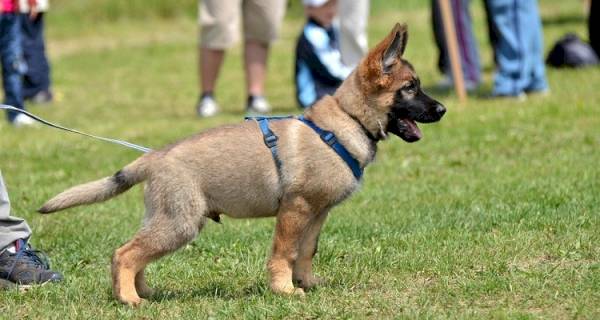
Toilet Training
Usually, the best spot for toilet training puppies is the back garden. Pre-vaccinated puppies should not be taken on walks outside the front however, as they are at risk of catching different diseases. You'll need the right equipment to clean up indoor poo and pee, which is inevitable at the start. Such equipment might include a scooper and puppy-safe disinfectant spray. It's important that you choose a spray which is not harmful to your puppy for cleaning up their messes.
When it comes to toilet training specifically, you should take them out to the garden every half an hour to hour at and after times of eating and drinking. Having scheduled feeding times can be helpful in this regard. Giving them praise or/and a treat when they've urinated or pooped outdoors will help to reinforce such acts as positive in their minds.
Use a strong negative tone and say ‘no' if you catch them going to the toilet inside and then quickly bring them outdoors and freely allow them to finish their business out the back. All of these tactics will help your puppy to learn to go to the toilet in the garden and sooner or later, it should become a natural habit for them.
Leaving Your Puppy Alone
Teaching a puppy that it's okay to be on their own is an important step in their development. Going from spending lots of time with your puppy to leaving them on their own for an entire workday is not a good idea. Instead, you should ease them into alone time. A playpen can help with this. If they are confined in a fun, play area, for example, it will become positive in their mind. Putting toys and food in such a pen can also help.
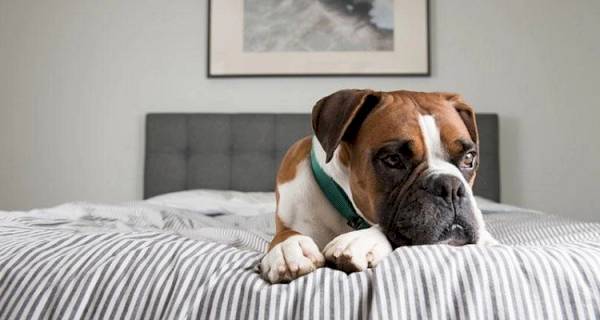
Quietly removing yourself from the room before returning with praise and a treat can make them see alone time as a good thing. If they cry a lot while being left alone, then perhaps the training needs to be slowed down. The use of a playpen is just a temporary measure for training your puppy to accept being on their own for several hours at a time. As your puppy grows more confident with alone time, they should be given access to more rooms and have more freedom around the house while you're away (if it is safe to do so).
Puppy Crate Training
Some dog owners use crates (metal cages) for their puppies for a range of reasons. These may be used for security reasons, to train your dog to be on their own or for transporting your dog such as when brought in a car to the vet, for example. With that being said, crates are likely to be unnecessary (with perhaps the exception of transport – although dog seat belts do exist with that said). Training your dog to feel comfortable, safe and non-destructive in the home when left on their own is usually achievable without a crate.
Basic Commands
Teaching your puppy basic commands is essential to establishing good communication with your pet as well as obedience. When it comes to teaching your dog to sit, you can achieve this by holding a treat while kneeling in front of your dog before lifting your hand up and stating the word “sit”. If your puppy tries to leap up, use your free hand to help him/her to be placed in a sitting position. Once they are, repeat “sit”, feed them the treat and praise them.
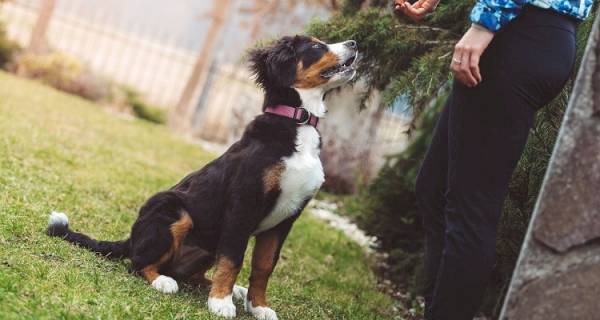
Treats can be used as a great form of positive reinforcement when it comes to all sorts of commands. For example, with getting your pet to stay still if you walk away from your pet and they stay still, you can praise them and reward them with a treat. If they fail to do so, then refrain from rewarding them yet and practise again until they understand the command “stay”.
Bringing a Puppy Home Checklist
- Make sure you have prepared your home for the arrival of your puppy, such as putting away small objects and breakable objects.
- Decide whether or not you want puppy insurance and purchase it if you do.
- Ensure that you have all the food necessities which your puppy will need (i.e. puppy food and puppy treats).
- Have bedding prepared.
- Have a playpen ready for your puppy.
- Have a baby gate if you have stairs.
- Prepare other necessary equipment such as a leash and harness.
- Have a plan for how you will allow your puppy to initially settle in.
- Have a plan/rough schedule of how you will keep your puppy on a routine (which can be adjusted accordingly if it seems reasonable to do so).
Bringing an Adult Dog Home
Of course, puppies are not the only dogs that may be new to a household. In this subsection, we will discuss what bringing an adult dog home entails.
Purchasing Supplies
As with puppies, there are certain supplies you'll need to buy for an adult dog. Distinctions will, for example, be in terms of food with certain pet food appropriate for adult dogs that would not be suitable for puppies. You'll also need to consider the size of the dog for purchasing items such as a harness and leash. You may need a baby gate to prevent your new dog from accessing upstairs, depending on their personality and how well they were trained previously.
Adjusting Your House For an Adult Dog
Similar adjustments to your house may be necessary for an adult dog as they would be with a puppy. However, an adult dog if well trained won't be as likely as a puppy to break fragile items or chew on wires, for example. So, depending on the personality and maturity of the dog you'll be bringing to your home you'll need to make similar or fewer adjustments as you would for a puppy.
Day Care & Dog Sitters
While adult dogs are more likely to manage alone time better (especially if they were trained in alone time by their previous owners), you still may need to consider doggy day-care or dog sitters for your pet in the event that you'll be gone for longer periods of time than say just a few hours during a workday.
As we discussed before, the prices range from £10 to £30 per day for doggy day-care and roughly £10 to £15 per hour for a dog sitter although asking a friend or family member to look after your dog can help with saving money.
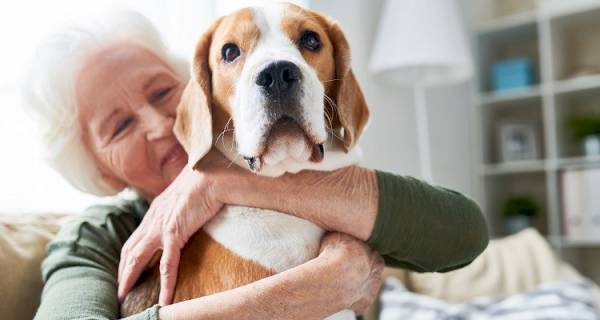
Preliminary Visits to Your Dog's Existing House
Visiting the existing home of a dog who'll be soon moving in with you is important in establishing friendly relations with him/her before the move. This will allow the dog to familiarise themselves with you so that upon moving in, it won't be a completely alien experience to them.
Discussions with Previous Owner
Talking to the previous owner about the dog, their habits, needs and personality can be hugely beneficial. The previous owner will likely know him/her inside out and could provide invaluable knowledge, information and tips that will help you take care of your new dog and to ensure that he/she settles into their new home as quickly as possible.
You'll also need to find out if there are any particular treats or toys that the dog loves. The owner will also be able to provide you with information regarding what training the dog has already undergone, and this will give you a clear idea of how developed and mature your new dog is.
Bringing Home a Rescue Dog
We will now look at what is involved in bringing home a rescue dog, a dog that was previously abused, neglected or abandoned by a previous owner. This adopt a dog guide with respect to rescue dogs will help you understand what it will involve.
Purchasing Supplies
The purchases needed for a rescue dog will essentially be the same as for an adult dog. You'll need to buy the right food, dog toys, bedding and perhaps a baby gate (depending on the nature of the dog) as well as maybe dog insurance. Of course, you'll need to consider whether or not a rescue dog might need other requirements.
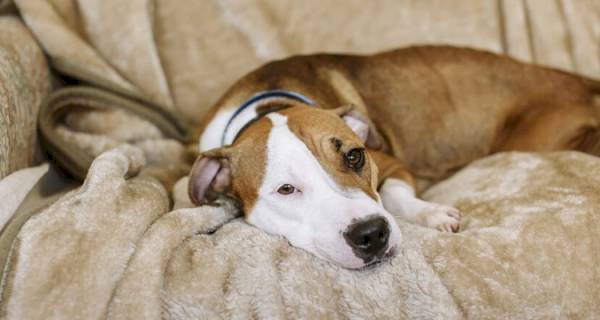
For example, if the previous dog was abused by being chained out back and left with just a kennel, then avoiding a kennel could be important for your dog's mental well-being as the sight of it could be traumatising for the dog. The best way to figure out what to buy and what not to buy for a rescue dog is to have a discussion with those at the shelter from which you are making the adoption.
Adjusting Your Home
The adjustments you'll need to make to your home for a rescue dog might differ from most adult dogs. If a rescue dog was abused or neglected, they may be more aggressive and therefore more likely to break things than other adult dogs. So, you'll need to judge the personality of your new rescue dog and factor this in for determining what to put away in the house. A baby gate may very well be necessary too.
You'll also have to consider what objects in the house could be problematic for a rescue dog in terms of their traumas. Are they afraid of loud noises? If so, you'll need to consider what can be kept quiet in the house or how you'll keep the dog in a separate room when, for example, using a microwave which might make a loud beep sound upon finishing. Of course, this may not be the case at all, but it's an example of one possible scenario where extra caution would be needed when bringing home a rescue dog.
Day Care & Dog Sitters
Organising day-care or/and dog sitters for a rescue dog could be quite different to organising the same forms of supervision for your average dog. You'll need to be upfront with those running the doggy day-care or the dog sitter, so they know the history and personality of your dog.
If your dog is aggressive or has other specific needs, then a doggy day-care, for example, may not be entirely suitable. However, there are some doggy day-cares out there which are specific to rescue dogs although they're not very common.
Preliminary Visits to Dog Rescue Shelter
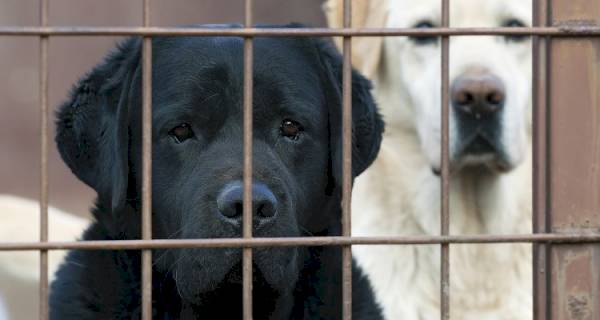
On visiting a dog at a rescue shelter, it's important to be calm, gentle and to make the experience as positive as possible. You'll need to take into consideration any forewarnings given by those at the shelter with regards to what the rescue dog likes and doesn't like. For example, the rescue dog may give a negative reaction to being petted in certain spots or at all in some cases. That is not to say that such reactions can't be worked on with time, of course, as petting can be very therapeutic for any dog and essential to their long-term well-being.
Research the Breed
On adopting a rescue dog, you should research the breed first and make sure you understand the ins-and-outs of what such breeds are like. Considerations such as how active and how feisty they are will be important. You should also research such breeds in the context of rescue dogs too.
Discussing Behavioural Issues
It's important that you discuss behavioural issues with those at the shelter in order to understand exactly what you'll be dealing with. Those at the shelter should be able to provide you with the details of how the abuse or neglect of said dog has affected them. Anxiety, destructive behaviour, aggression or a lack of obedience training are just some of the issues that may exist.
Understanding exactly what issues your rescue dog has will help you to know whether you feel you are capable of such an undertaken and if you are, to be sufficiently prepared for doing so.
History with Other Pets & Children
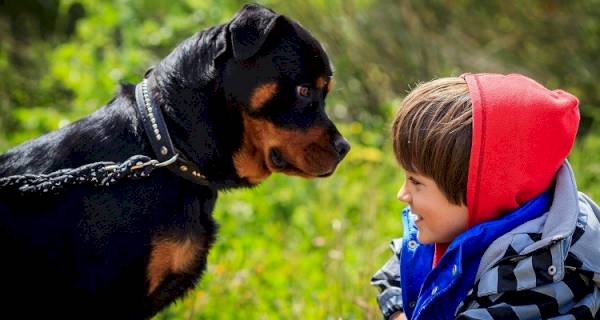
Does the rescue dog have a particular history with other pets and children? This is an important question to answer either if you have other pets or/and children at home or anticipate their visit at some point or another form of direct interaction with your dog (such as on walks).
If your dog has a history of being aggressive or even violent towards others, then it would not be suitable to take them home if you have other pets or children present. If you don't and do adopt such a rescue dog, it's important that you do not put them in situations where they have ease of access to other pets or children (i.e. ensure that they are on a leash).
Adult Dog Care
We will now look at caring for an adult dog with topics such as routine and finding out how to care for a dog of a certain age and breed, for example.
Checking Vaccinations Are Up-to-date
When bringing a new dog home, you should ensure that they are up-to-date when it comes to vaccines. The previous owner or shelter should know whether or not the dog needs any vaccines. In some cases, this knowledge won't be known. For example, if a dog is a rescue dog, then this may be impossible to know. The shelter may vaccinate the dog themselves, but if not and if you have any doubts regarding whether your new dog is properly vaccinated, it would be best to visit a vet and discuss the matter with them in further detail.
Bedding
When it comes to bedding for a new dog, you'll need to find somewhere to sleep for your new friend that is breed and size appropriate.
Introducing Your Adult Dog to Strangers
As with introducing a puppy to strangers (both humans and pets), it may be important that you show confidence around these individuals so that your dog can feel comfortable. By doing this, you can lead the way and show that there's no reason to be alarmed.

Of course, your dog may already be confident and outgoing, in which case these concerns will be far less pronounced. If you have a timid dog or a rescue dog, however, then such steps will likely be necessary. It's important that you don't introduce your dog to non-vaccinated animals for health reasons. Introducing a new dog to a cat can be especially difficult, so it's important that you all the necessary precautions.
Establishing a Routine
Having a routine for an adult dog is important just as the same is true for a puppy. Feeding your dog at the same time each day and keeping a routine when it comes to exercise (including walks) and sleeping are important for your dog and you. Keeping a similar schedule to the dog's previous routine may also be helpful, so long as it's reasonable to expect that you could keep to such a schedule.
Has Your Dog Been Neutered?
The previous owner or shelter from which you are getting your dog should have the answer to this question. However, in cases such as with a rescue dog, it may be unknown. A key sign that a dog has been neutered or spayed usually comes in the form of an incision along their privates. Other signs may include minimal aggression in males or the lack of a heat cycle in females. However, visiting a vet and having them confirm whether or not your dog has been neutered or spayed is the best way to be sure.
Researching Your Dog's Exercise Needs
While most dogs need roughly half an hour to 60 minutes of exercise per day, factors such as their age, breed and size will play a role in this. You should undertake the necessary research to figure out what your dog's exercise needs are based on these factors. Smaller dogs often need less exercise, but that should not be confused with minimal to no exercise at all.
Dog Feeding
How much you'll need to feed your dog will depend on the breed and size of the dog.
Dog Food Needs in Weight:
This is how much food a dog will need based on its weight. Of course, the factor of its breed needs to also be taken into consideration as the chart below is a rough guide.
| Size of Dog | Daily Food for Your Dog |
| 2 Kilograms | Half a cup to 5/8ths of a cup |
| 4.5 Kilograms | 3/4ths of a cup to a 1 full cup |
| 9 Kilograms | 1.25 to 1.75 cups |
| 18 Kilograms | 2.25 to 3 cups |
| 27 Kilograms | 3 to 4 cups |
| 36 Kilograms | 3 & 2/3rds to 5 cups |
| 45+ Kilograms | 4.25 to 6 cups |
Most food items will also explain how much should be fed per day and generally they should follow an approach similar to that outlined in the chart above. In some cases, they may state otherwise.
Dog Training
For this next subsection, we will look at training an adult dog. Of course, if you are bringing home an adult dog, they may very well have already undergone much, if not all of their necessary training. The previous owner or shelter from which you are adopting them should have knowledge of this information.
Usually, the exception will be if they're a rescue dog. If training is required for your new adult dog, you should be aware that it may take a bit longer since puppies tend to learn faster than older dogs. If you find it especially difficult, consider taking your dog to training classes.
Toilet Training
If your adult dog lacks toilet training, a similar approach to training a puppy should be taken, although with more patience. Older dogs will tend to hold in their pee longer naturally. By taking your dog out the back frequently, you increase the chances that he/she will pee outside. Once they do, reward them with treats and praise and keep offering positive reinforcement surrounding the idea of urinating outdoors.

Keeping to a specific routine can help both you and your dog. As training progresses, all dogs will make it obvious that they need to go outside, such as scratching at the back door or barking. Some dogs may simply show signs of distress including walking around in circles, whining and pacing. By paying close attention to your dog's body language, you'll get to know what they want more easily.
Training Your Adult Dog To Be Left Alone
Training your dog to be left alone is similar as with training a puppy, albeit a playpen is less likely to play a role of course. Instead, if your dog requires training when it comes to being on their own, leaving them in their bed and exiting the room is a good way to make the first step in such training. If they stay put, you should return and reward them with a treat and praise. Keep up this practice as a regular routine and prolong the practice as time goes on so that your dog develops more and more confidence with being solitary.
Lead & Walk Training
If your dog is uncomfortable with wearing a lead or/and hasn't worn one before, one first step you could take is by having your dog wear a lead indoors so that they warm up to the idea of having one. Teaching your dog to walk with the leash on can be achieved by standing a few paces away from your dog and offering treats. You can further help this process by having initially taught your dog to come to you under a given command and then use that command in teaching your dog to walk toward you with his/her leash on. Once they do, so reward them with a treat and praise.
After you've made sufficient progress, it's time to take your dog on a walk around the house with their leash on. And then once this has proven successful, you should take your dog outside on a leash. The use of rewards outdoors may also be necessary to help train them in regular walks, although more than likely their indoor training will suffice.
Crate Training
If a crate is required for a dog, training them to be comfortable in a crate can be achieved by placing treats and toys inside the crate. A crate should have sufficient room for your dog to stand up inside and walk around in.
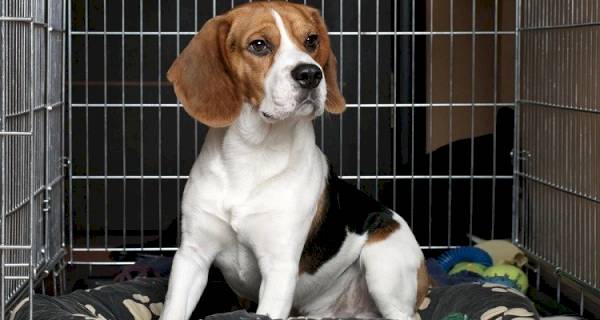
By creating a positive environment and incentivizing your dog to be in the crate using treats and praise, your dog will see their crate as a comfortable and enjoyable place to be.
Basic Commands
As with puppies, teaching a dog basic commands can best be achieved using the rewards of treats and praise. As we discussed earlier, teaching a dog to stay can be achieved by walking away with a treat and telling your dog to “stay”. Once they do so, reward them with a treat and praise. Likewise, getting your dog to “sit” is achieved with a similar approach, although you should be knelt in front of your dog, with your hand up in the air so that they are more likely to move into a sitting position. Push your dog's bottom down gently if they are leaping into the air until they are in a sitting position before rewarding them. Similar tactics can be used for other commands.
More Complicated Commands
Teaching your dog more complicated commands still ultimately comes down to a process of teaching a dog that they'll be rewarded if they perform certain actions. Helping them figure these actions out is where it gets more difficult with more complicated commands. Such commands include fetching a ball and getting a dog to crawl. Of course, many challenging commands are unnecessary for a dog and are simple additions to essential commands.
Bringing an Adult Dog Home Checklist
- Make sure you have prepared your home for the arrival of your dog, such as putting away small objects and breakable objects if deemed necessary.
- Decide whether or not you want dog insurance and purchase it if you do.
- Have appropriate bedding prepared.
- Have a baby gate if necessary.
- Prepare other essential equipment such as a leash and harness.
- Have a plan for how you will allow your dog to initially settle in.
- Have a plan/rough schedule of how you will keep your dog on a routine (which can be adjusted accordingly if it seems reasonable to do so).
New Cat Owner Guide
For this section, we will explore how to prepare for a cat. We will look at topics such as preparing for a kitten, litter box training and feeding an adult cat.
Things to Consider Before Getting a Kitten or Cat
As with getting ready for a new puppy or dog, getting a kitten or cat is also a big responsibility, and there are many points you'll need to contemplate before deciding whether or not it's right for you.
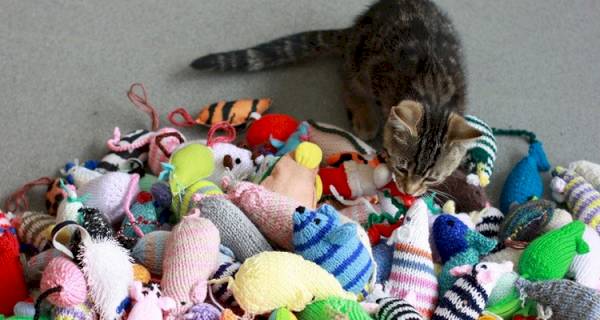
It’s a Lifetime Commitment
Having a cat is a long-term commitment. While different individuals and breeds will have varied life expectancies, most cats live on average for 10-15 years.
Cat & Kitten Expenses
Owning a cat could cost up to or more than £800-£1000 per year. The main expense involved in having a cat is that of their food. You'll also need to consider the cost of buying treats as well as their bowls for food and water. Other expenses will include their bedding, toys, and you'll also need to think about whether you want to buy them an additional play spot such as a “cat tree”.
Vet visits will also account for a sizable percentage of your annual expenses in taking care of a cat, and you might also want to purchase insurance for your kitten or cat. For indoor cats especially, you'll want to buy them a litter tray as well as a regular supply of new cat litter. Scoopers for their poop and pee from their litter tray will be another expense.
Preventative medications such as flea treatment are also important for the well-being of cats. Another expense to consider is that of grooming equipment such as a cat brush.
Does a New Cat Fit Your Lifestyle?
You'll have to also be sure that having a kitten or cat fits with your lifestyle. Looking after a cat is a big commitment as already mentioned. Not only do you need to ensure you can meet all their basic requirements, but you need to be attentive to know when something is off and whether a vet visit is needed.
Are they urinating as normal? Are they eating as normal? Do they seem to be hiding away from everyone all of a sudden? Being able to answer these questions is important for monitoring the well-being of your cat.
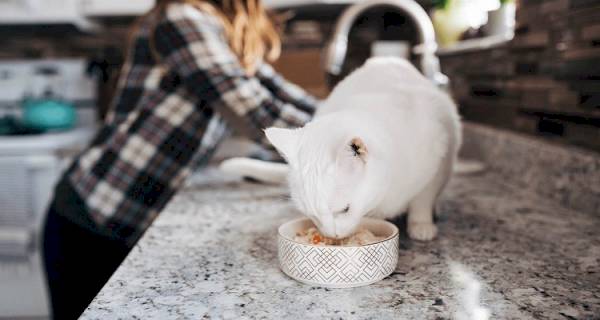
One positive, however, is that cats usually don't need as much time with you like dogs and will be better able to handle alone time. That is not to say by any means that they want to be alone all the time, but they are certainly more solitary than dogs are.
Cat Allergies
It's vital that you know whether you or anyone in your household has an allergy to cats before welcoming one into your home. Everyone in your household should get tested for allergies before getting a cat. If you go ahead with bringing a cat or kitten home and allergies exist but are mild, antihistamines can help. A person with asthma, however, should talk to a doctor if a pet is moving into the house.
Time & Meeting Their Needs
Do you have the time to commit to a kitten or cat? If everyone in the house is constantly busy, then it may not be a suitable environment for a new pet. It's important to know that you or your household as a whole will have the time to meet the needs of a new kitten or cat.
Outdoor Access
While some cats are house cats, other felines will enjoy the outdoors. If this is the case and you plan to give your cat access to the outdoors, is it a suitable location? If your house is located by a busy road, then the outdoors may be a dangerous place for your cat. Having a back garden, however, would be a positive point to consider in terms of giving your cat or kitten access to the outdoors. Of course, kittens should be introduced to the outdoors slowly, with proper training and at the right time.

Is Your Household Suitable for a Cat?
It's important to also establish whether your home is suited to a cat. Some cats are more of an indoor breed than others. These include Persians, Siamese cats and Ragdolls. If you live in an apartment, for example, or in the city, then an outdoor cat may not be suitable.
Are Cats More Low-Maintenance than Dogs?
While cats will require less attention than dogs, you shouldn't under-estimate how much work is still involved in caring for a cat. As discussed earlier, you need to be able to pay close attention to their needs and to have the ability to notice signs when something is off. The latter could be vital, especially if a medical issue arose which previously you were unaware of.
Preparing for a Kitten
We will now look at how you can prepare for the arrival of your new kitten specifically.
Put Away Dangerous Objects & Chemicals
Small objects are one of the primary concerns when it comes to bringing a new kitten home. Such objects should be put away. Further, wires and cables should be put up, taped or in some other way put out of reach of your kitten. Plastic bags of any description should be kept out of reach from your kitten too, and you should have a baby gate installed if you have stairs.
Beyond that, you should always keep the toilet lid down and have lids closed on anything your kitten could fall into such as a bin. You should also take a close look at any toys you've bought for your kitten and consider whether or not any of them could be dangerous (are they a choking hazard?).
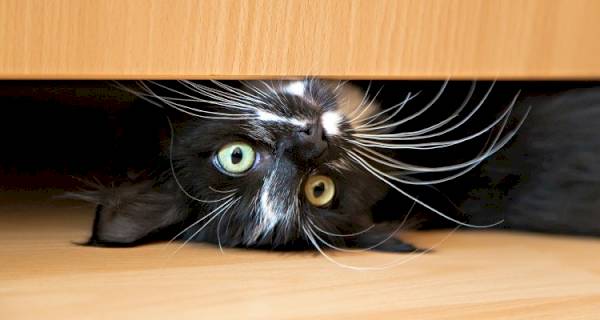
You'll also want to hide away any dangerous chemicals that your kitten could access. Make sure they are away in drawers or another suitable location that your kitten cannot reach. By taking the right steps from the start, you can make your home as safe as possible for the arrival of your new kitten.
Purchasing Essential Items
Essential items you'll need to buy for your kitten include a litter tray, cat litter, kitten food and treats. Kittens will require different food and treats than adult cats, so make sure you buy the correct food items for your kitten. A carrier will also be an important purchase you'll need to make as this will allow you to bring your kitten in the car with you such as for vet visits.
Talking to Young Children about Treating a Kitten Correctly
If you have any young children at home, it's important to teach them how they should act toward a kitten. Explaining to your children to be gentle and caring towards the kitten is a good first step. You should discuss prior to adoption and continue to teach them once the kitten arrives. Practically showing them how to gently pet a kitten, for example, would be helpful. Such practice should continue until you feel comfortable that your children understand how to treat the kitten correctly.
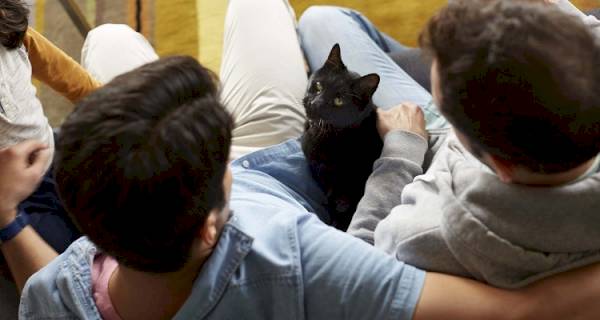
Moving Other Animals Away Temporarily
If you have other pets at home and depending on what type of pet they are, you may need to keep them separate from your kitten at first and then slowly introduce them to one another. This might mean keeping your pet in a separate part of the house or keeping them at the house of a friend, family member or neighbour until you feel it's time to allow both pets to co-exist.
New Kitten Care
For this subsection, we will consider what caring for a kitten entails. This includes vaccinations, establishing a feeding routine and playtime.
First Vaccinations
Your kitten will require several different vaccines within the first few months of their life. The best way to go about this is to have a chat with your vet and figure out when exactly is the right time to get each given vaccine. Such vaccines will protect against the cat flu and feline leukaemia virus. A comprehensive course of essential vaccines for a kitten will usually cost between £20 and £75.
Kitten Insurance
Some kitten owners will avail of insurance. Lifetime cover and 12-month cover are quite common examples of insurances that will apply to a kitten or cat. Usually, the younger the cat is, the cheaper the insurance will be. Such insurance plans will cover expenses such as vet fees.
Introducing Strangers to Your Kitten
For introducing a kitten to a new person, they should be in a quiet and calm environment. Ideally, the other person should have treats or a toy so that the kitten quickly establishes positive associations with said person. Visitors should not reach out to try and grab your kitten as this could really frighten them.
The kitten should be given time to approach others. Given the more unpredictable nature of other animals, introducing the kitten to pets should be done more slowly and with the right level of supervision to ensure the safety and well-being of your kitten. It's also important that any other animals your kitten comes into contact with are also vaccinated, especially prior to your kitten's vaccinations.
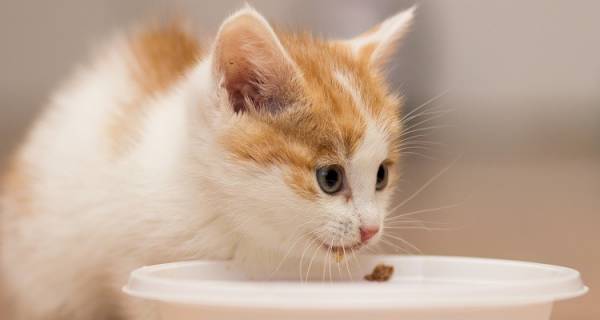
Establishing a Feeding Routine
Very Young Kittens:
It's important to create a consistent feeding routine for your kitten. A new-born kitten will need to be bottle-fed although it's unlikely you'll be adopting a kitten who was born so recently. A kitten of 2-3 weeks old will need to be fed at least half a tablespoon of formula or milk at each meal with a given meal occurring every 2-3 hours. Once the kitten reaches and surpasses a month old, it will need mealtimes less often but with larger quantities as he/she grows.
A bowl of formula or perhaps even other types of liquid food should be offered to your kitten at this point. A gruel mixture should be offered at about 6 weeks in and as the week's progress it should become less watery and dry kitten food should be offered. By now, a kitten should have meals 3 times a day and enough to meet its needs. Regular kitten food and formula should be the staple diet of your kitten for week 7-8.
Older Kittens:
For a kitten that is at least 9 weeks old, they should have regular kitten food twice per day. It's important to establish a routine in this regard and stick to it consistently. This will benefit the development and health of your kitten.
Kitten Bedding
When it comes to providing your kitten with bedding, a kittening box should be provided with paper or alternatively puppy training pads for your kitten to sleep in. Even using newspapers can work since your kitten is likely to urinate and excrete there at first and thus the newspaper can be just thrown in the bin and replaced. A litter tray will be more appropriate after your kitten has been at home for a couple of weeks and has been gradually trained to urinate and excrete in their tray.
There are endless options for kitten bedding but don’t overspend because you’re new kitten is likely to find there own creative place to sleep in your home.
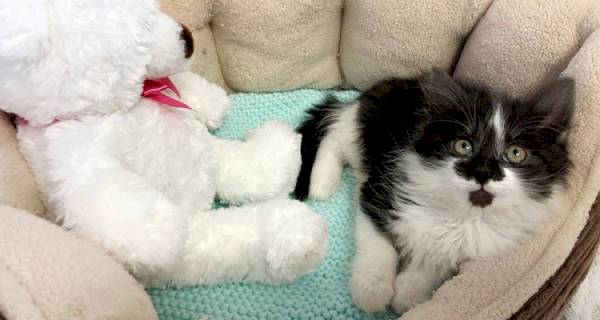
Neutering & Spaying
Male kittens should be neutered at about four months old while female kittens should be spayed when they've reached five to six months old. Neutering and spaying help to prevent undesired pregnancies and can help protect against diseases.
Playing With Your Kitten
Providing your kitten with toys is one of the best ways for you and your kitten to bond. Many kittens may not like being held or tickled as puppies might. You want to get to know your kitten and understand what they like and don't like. It's important to be cautious, so that you don't accidentally frighten your kitten. String toys are often a favourite with kittens. It's best to keep trying with different toys until you find which ones your kitten likes.
Feeding a Kitten
For this section, we will look at what is involved in feeding a kitten. How much a kitten needs will vary depending on their weight, breed and age (in weeks).
Kitten Food Needs in Age & Weight:
This is how much food a kitten will need based on its age and weight (rough estimate). Of course, the factor of its breed and actual weight needs to also be taken into consideration as the chart below is a rough guide. Some kittens may grow faster or slower than this chart suggests.
| Age of Kitten | Size of Kitten | Daily Food Intake | Frequency of Meals |
| 0-1 Week | 50 to 150 grams | 2-6 mls | Every 2 hours |
| 1-2 Weeks | 150 to 250 grams | 6-10 mls | Every 2-3 hours |
| 2-3 Weeks | 250 to 350 grams | 10-14 mls | Every 3-4 hours |
| 3-4 Weeks | 350 to 450 grams | 14-18 mls | Every 4-5 hours |
| 4-5 Weeks | 450 to 550 grams | 18-22mls | Every 5-6 hours |
| 5-8 Weeks | 550 to 880 grams | Weaned off formula – Given sufficient wet food | Every 6 hours |
Most food items will also explain how much should be fed per day and generally they should follow an approach similar to that outlined in the chart above. In some cases, they may state otherwise.
Litter Box Training a Kitten
Once your kitten has been home for a couple of weeks, it'll be time to teach him/her how to use a litter box. When it comes to litter training for your kitten, you should place their litter tray in a quiet and calm area of the home. You may need to repeatedly place your kitten in the litter tray if they don't understand the purpose of the tray at first. Your kitten should be praised for urinating or excreting in the litter tray and never punished for not doing so.
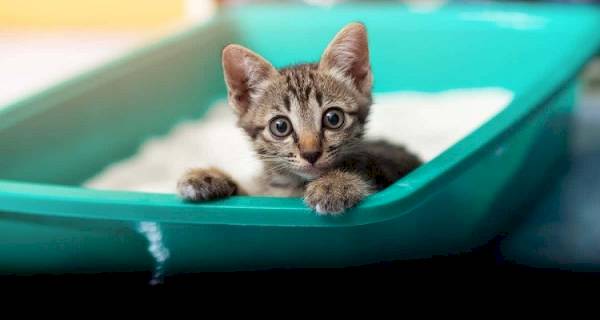
Punishing a cat does not have the same constructive impact as punishing a dog. If all else fails, confining your kitten in an area of the house where they are near the litter tray could also encourage them to use it for urinating and excreting.
You should also clean urination and excretion outside of the litter tray well. This makes it less likely for your kitten to use that spot again. It's also important to clean out their litter tray and put down new cat litter frequently.
Bringing Home a Kitten Checklist
- Make sure your household is safe for your kitten by removing or keeping out of reach any dangerous objects or chemicals.
- Decide whether or not you want to purchase kitten insurance and purchase it if you do.
- If you have young children, ensure they know how to treat a kitten correctly.
- Buy the appropriate kitten food or formula and treats (if at the right age – very young kittens cannot eat solids and will rely on formula or milk).
- Purchase kitten toys.
- Purchase proper bedding, a litter tray and other necessary equipment for your kitten.
- Have a baby gate installed if you have stairs.
- Have a plan for how you will allow your kitten to initially settle in.
- Have a plan/rough schedule of how you will keep your kitten on a routine (which can be adjusted accordingly if it seems reasonable to do so).
Introducing a New Adult Cat to Your Home
In this subsection, we will look at how to introduce an adult cat to your home. We will look at the supplies you'll need to buy and how to find out what needs and preferences your new friend has.
Purchasing Supplies
The supplies necessary for an adult cat are quite similar to that of a kitten. Of course, you'll need appropriate bedding however for an adult cat; it's unlikely you'll need paper to protect against urination or excretion (assuming they've been litter trained before). Further, you'll need to buy a litter tray and the necessary tools to go with it.
A baby gate may or may not be necessary for an adult cat, but toys are still recommended although we will discuss this in more detail later in this section. Adult cats will, of course, need different food and treats to that of a kitten. Other supplies you'll need to include a bowl for food and water. You may also choose to purchase a cat tree, for example.
Adjusting Your Home For a New Adult Cat
How much you'll need to adjust in your home will depend on the nature of the cat. It's still advisable however to put away wires and small objects as well as chemicals which could be dangerous to a cat. Again, getting a baby gate if you have stairs is at your discretion. It would be best to discuss this with the previous owner or shelter, depending on whom you are taking the cat directly from. Toilet lids and lids over other openings such as bins should be kept down even with an adult cat.
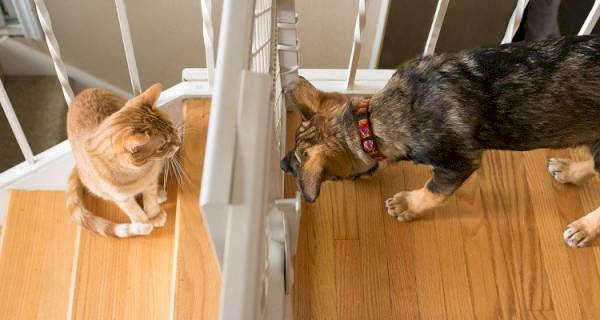
Preliminary Visits to Cat's Existing Home
It's important that you establish a good vibe with a cat before welcoming them into your home. Some tips to consider are kneeling down and getting to a similar level as the cat. Offering your hand is also a great way for the cat to familiarise themselves with you. Leaving your hand out in front of them will likely result in them sniffing or even nuzzling your hand. You should move at the same pace as he/she and avoid staring at the cat too.
You should pay close attention to the cat's body language to understand what they like and what they don't like and also listen to the advice offered by their current owner or caretaker. Don't force the cat to interact either. Let the cat do things in their own time. You may need to repeat this process next time you meet as the cat may take a while to recognise your smell, for example.
Discussions with Previous Owner
You should have detailed discussions with the cat's previous owner or their caretaker (whoever is the most appropriate point of contact). Find out if there are any particular treats or toys that the cat likes best. This way, you'll be able to help maximize the cat's welfare as well as offering a sense of familiarity to the cat once they move in. Taking notes and understanding what the cat prefers and doesn't like will be beneficial to you both. Further, you should also find out whether or not the cat goes outdoors and if they do, to what degree.
Cat Care
We will now look at what caring for a cat entails. Factors in successful cat care include bedding, playtime, and emptying their litter trays.

Checking Vaccinations Are Up-to-date
When bringing a new cat home, you should ensure that they are up-to-date when it comes to vaccines. The previous owner or shelter should know whether or not the cat needs any vaccines. In some cases, this knowledge won't be known. For example, if a cat was rescued from an abusive home or was abandoned, then this may be impossible to know. The shelter may vaccinate the cat themselves, but if not and if you have any doubts regarding whether your new cat is properly vaccinated, it would be best to visit a vet and discuss the matter with them in further detail.
Cat Insurance
Cat insurance can be purchased, often in a lifetime or more short-term packages (such as 12 months cover). These packages will generally cover costs such as vet expenses.
Feeding Place
The ideal feeding spot for your cat should be a calm and quiet place, somewhere where they're unlikely to face many distractions. Their feeding areas should be placed away from their litter trays, and furthermore, you should not move their feeding locations without good reason. If you have multiple cats or pets for that matter, you'll need to ensure that everyone is getting enough to eat as some pets may bully others and steal their food. Having separate feeding stations apart from one another for each pet is one possible solution if this problem arises.
Adult Cat Bedding
Bedding for an adult cat should be size appropriate and relevant to their levels of maturity. A well-trained cat. as already mentioned, will not need paper or pads on their bed since they know to urinate and excrete in their litter tray.
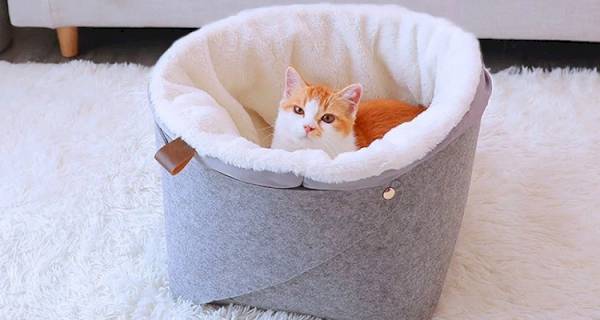
Some breeds may need specific beds as may certain individual cats based on their personality. Cats will often change their sleeping spots and find new locations around the house to sleep as time progresses. So, don't be too disheartened if the bed you bought for your cat is neglected for another spot in your home.
Are They Neutered?
If you do not know whether your cat has been neutered or spayed, a key sign that a cat has usually comes in the form of an incision along their privates. Some cats may have a mark on their ear. An “M” tattoo usually means micro-chipped while other tattoos often infer that the cat has been neutered or spayed. However, visiting a vet to find out is often the only way to know for certain.
Playing with Your New Adult Cat
Most cats love toys of different kinds. Of course, it may be a case of hit and miss before you find out what toys your cat likes (unless the previous owner or shelter informed you). String toys are particularly popular. Some toys may frighten a cat, so make sure you can quickly figure out if a cat is afraid of one in particular so the toy can be discounted. Interacting with your cat and having playtime with them is an important aspect of bonding with your feline friend. It can also help your cat keep healthy and at a good weight, especially if they're an indoor cat and prone to lazing around.
Emptying Their Litter Tray
You should use a tool to scoop up your cat's poop and pee on a daily basis. Small plastic bags and gloves can help with this so that you can easily collect their excretions so that they can be easily binned afterwards. Their litter tray should be emptied and cleaned out roughly twice a week. New cat litter should be added once you've cleaned out their tray with water and soap.
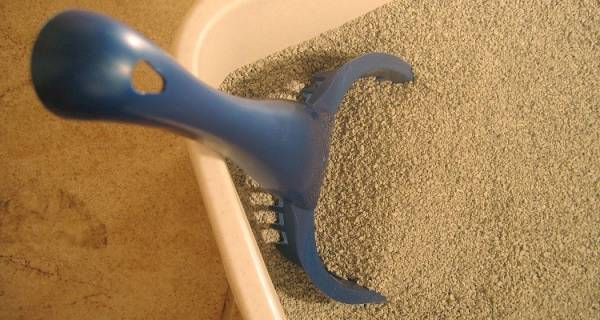
Letting Cat Outdoors
If your cat is an outdoor cat, you should generally wait till your cat has spent a month to six weeks at home before letting them outside. You should ensure your cat is comfortable in their environment and around everyone in the household before introducing them to the outdoors. A back garden is ideal for their first explorations of the outdoors since moving in with you. Making your garden as cat-friendly as possible will also be advantageous as it will make your cat more likely to stay within a short distance of the house.
Teaching your cat to come toward you when their name is called, while offering treats is a good way to help make it more likely your cat will come running back home when you call for them outside. This should be practised when they've been introduced to the garden as well as initially indoors. Their first experience of the outdoors, whether in the back garden or out the front should be with you. You should have treats and toys in your hands too so they can be easily lured back home. Microchipping can bring peace of mind if you're concerned about your cat ever running away. A quick-release safety collar with your name and number can also be helpful.
Feeding Your New Cat
How much food a cat needs will vary depending on their weight, breed and age.
Cat Food Needs in Weight:
This is how much food a cat will need based on its weight and level of activity (rough estimate). Factors such as breed and age should also be taken into account.
| Weight of Cat | Food For Active Cat | Food For Less Active Cat |
| 2 Kilograms | 1/3rd of a cup | 1/3rd of a cup |
| 3 Kilograms | 3/8ths of a cup | 3/8ths of a cup |
| 4 Kilograms | Half a cup | Half a cup |
| 5 Kilograms | 5/8ths of a cup | Half a cup |
| 6 Kilograms | 2/3rds of a cup | 5/8ths of a cup |
| 8 Kilograms | 3/4ths of a cup | 2/3rds of a cup |
| 10 Kilograms | 1 cup | 2/3rds of a cup |
| 12 Kilograms | 1 & 1/8th of a cup | 3/4ths of a cup |
*1 cup = 120 grams.
Most food items will also explain how much should be fed per day and generally they should follow an approach similar to that outlined in the chart above. In some cases, they may state otherwise.
Letting Your Cat Outside
Figuring out whether or not a cat should be let outside or kept as a house cat can be a difficult call to make. Of course, if they had a previous owner, then their advice will help guide you in the right direction. However, in the absence of such advice or if you are raising the cat from the age of a kitten, there are different pros and cons you should consider. On the one hand, letting a cat outside will be beneficial for their physical health, mental well-being, it will allow them to have more privacy (especially considering how cats are quite solitary), and it will satisfy your cat's inner nature too.
On the contrary, one of the biggest concerns of letting your cat roam outdoors is cars. Other risks include the threat of other animals such as dogs and foxes as well as the possibility that your cat could go missing. Outdoors, your cat is more easily exposed to toxic substances, toxic plants and the diseases of other cats. Further, your cat could endanger themselves by hiding under the bonnet of a vehicle.
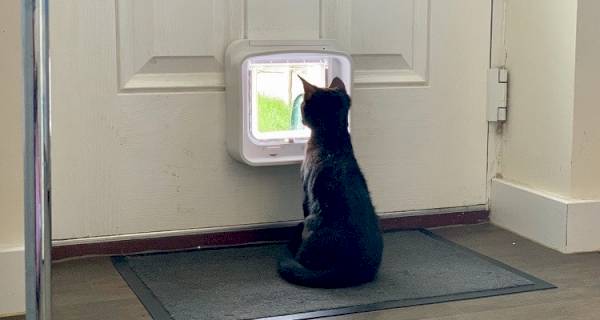
You should weigh up these options and consider it in the context of what you know about your cat. You'll likely have an idea of how witty and safety-conscious your cat is. Of course, that won't apply for some dangers that your cat won't understand, such as toxic chemicals. With that said, there are ways you can help reduce these risks such as calling your cat to come inside before rush hour if you live by a road. Ultimately, it's a call you'll have to make based on what you think is most suitable for your cat.
Bringing an Adult Cat Home Checklist
- Make sure you have prepared your home for the arrival of your adult cat. The needs of an adult cat won't be great but ensure you remove anything you don't want to get damaged if they have some issues settling.
- If you require pet insurance for your cat then purchase it.
- Ensure that you have all the necessities which your cat will need (i.e. cat food, treats, toys and litter trays).
- Have a bedding area prepared where the cat can be alone if wanted.
- Prepare any boundaries. An adult cat is likely to make light work of a baby gate so you may need bigger measures if you want to prevent your feline friend going into any rooms.
- Educate family members on handling the cat so not to irritate them.
- Establish a routine to help them settle in.
Tips for Adopting a Dog
There are many pieces of advice you should consider if you want to adopt a dog.
- Ensure that your home is appropriate or made appropriate for a dog to move in.
- Think carefully before choosing the right shelter to adopt from.
- Make sure you stock up on all the basic necessities for your new dog.
- Check whether any plants in your home are poisonous to dogs.
- Everyone at home should get an allergy test before welcoming a dog to your house.
- You should get a basic check-up with your vet shortly after adopting your dog, just to be sure that everything's okay and to clear up anything you're unsure of about your dog's physiology.
- Looking into insurance for your dog.
Choosing a Crate Size
If you choose to buy a crate for your dog, it's key that you find the right-sized crate. The ideal size is one where your dog can stand up in and has enough room to move around in. Of course, if your dog is young, you'll also need to consider that they may grow rapidly and could soon outgrow a crate that is currently of a suitable size for them.
Crate Size Chart Based on Weight of Dog:
| Dog Weight | Crate Size |
| 2 to 7 Kilograms | Up to 12 Inches |
| 7 to 11 Kilograms | Up to 17 Inches |
| 11 to 27 Kilograms | Up to 23 Inches |
| 27 to 36 Kilograms | Up to 29 Inches |
| 36 Kilograms + | Up to 35 Inches |
The above chart is based on estimates.
Tips for Adopting a Cat
As for adopting a cat, there are various tips you should consider.
- Prepare a room which is safe for a cat.
- Ensure that your home is appropriate or made appropriate for a dog to move in.
- Make sure you stock up on all the basic necessities for your new cat.
- Have a cat litter tray ready as well as the tools that go with it.
- Check whether any plants in your home are poisonous to cats.
- Do your research regarding preventative treatments for cats such as flea treatment.
- Everyone at home should get an allergy test before welcoming a cat to your house.
- You should get a basic check-up with your vet soon after adopting your cat. This way, you can be sure that your cat is okay physically.
- Consider getting cat insurance.
How to Find a Good Vet
Finding a good veterinary could prove essential for the well-being of your pet in the long-run. Taking a look at a given vets' website will help give you a sense of what they're like and how qualified they are.
Asking for recommendations among people you know and online (such as in forums and social media groups) can also be helpful as well as looking at online reviews for different clinics. Meeting with different vets can also help you to get a clearer idea of whether they seem like a good fit to work with your pet. You should also pay attention to how your pet is around each vet as you want not just a vet who is good for your pet's health but also one who your pet is more at ease with.
FAQs
Q: What should you do when you meet a dog for the first time?
A: On meeting a dog for the first time, you should allow the dog to sniff and approach you. Don't reach out and try to grab him/her. Pay attention to the dog's body language and use a calm voice.
Q: How long does it take for a cat to settle into a new home?
A: Most cats will settle in within a few days to a week and a half while others could take weeks or months. Cats with traumas could take longer than most cats to settle into a new home.
Q: When should a puppy be neutered?
A: A male dog can be neutered after they've reached about eight weeks old while the same is true for a female dog in terms of being spayed.
Q: What dog should I get?
A: Working out what breed of dog you should get ought to depend on factors such as your lifestyle, how much free time you have (such as to take a dog out for walks) and how a dog would fit in, in your home. You should take these factors and other relevant points into consideration before making up your mind accordingly.
Q: How to remove a tick from a dog?
A: While you can get a vet to remove a tick, it can be performed at home. You should avail of fine-point tweezers (large, blunt tips should not be used). Spread out the fur of your dog, place the fine-point tweezers around the tick, grasping it as near to the skin as possible. You should then very slowly and gently pull upward in a consistent but cautious motion. Wash your hands thoroughly and rinse the tweezers with disinfectant. You should also consider applying a safe antibiotic ointment to your dog to prevent re-infection.
Q: How often should you wash your dog?
A: Generally, you should wash your dog roughly once a month. In most cases, it is not recommended to wash your dog more than once per week unless advised to by a vet.
Q: Why does my cat bite me?
A: Biting may be a sign of overstimulation in a cat. It can result from being petted too much, or it may be as a result of excitement. Some cats may bite when stressed or afraid.
Q: How many vaccines does a cat need?
A: Several vaccines as a comprehensive package will be given to a young kitten while older cats will need vaccines less frequently.
Q: Is using a dog crate necessary?
A: Generally speaking, no. In most cases, any issues that may arise from a dog not being kept in a crate can be solved through other means. If your dog is destructive at home, for example, he/she can often be trained, even if it might take time.
Q: How long does it take to house train a puppy?
A: For a puppy, it can take up to 4-6 months to fully train them.
Sources:
https://www.puplife.com/pages/getting-a-puppy-prepare-for-the-commitment
https://www.petsbest.com/blog/dog-breed-to-fit-your-lifestyle/
https://www.yourpurebredpuppy.com/training/articles/puppy-training-schedule.html
https://dogcare.dailypuppy.com/puppy-adjust-new-home-1455.html
https://www.rspca.org.uk/adviceandwelfare/pets/dogs/health/vaccinations
https://www.thebalancecareers.com/puppy-s-first-grooming-2660524
https://www.rspca.org.uk/findapet/rehomeapet/process/rehomeadog
https://www.companionanimalpsychology.com/2018/10/a-short-petting-session-improves.html
https://www.banfield.com/pet-healthcare/additional-resources/ask-a-vet/i-recently-adopted-a-dog-from
https://pethelpful.com/dogs/How-to-Tell-if-a-Dog-is-Spayed
https://www.petmd.com/blogs/thedailyvet/jcoates/2011/aug/how_long_do_cats_live-11496
https://www.petcoach.co/article/cost-of-owning-a-cat/
https://www.vets-now.com/pet-care-advice/vaccinations-cats-need-to-know-vets-now/
https://www.thesprucepets.com/kitten-feeding-schedule-4169428
https://www.medicanimal.com/5-point-Checklist-for-Owners-Expecting-Kittens/a/ART111479
https://www.bluecross.org.uk/pet-advice/neutering-your-cat
https://www.hillspet.com/cat-care/healthcare/benefits-of-neutering-a-cat
https://www.humanerescuealliance.org/blog/posts/tips-for-a-successful-meet-and-greet-with-a-cat
https://www.battersea.org.uk/pet-advice/cat-care-advice/introducing-your-cat-outside
https://www.perfect-fit.co.uk/letting-your-cat-outside
https://allaboutthedogue.com/blogs/facefive/posts/top-10-tips-for-adopting-a-dog
https://dogtime.com/dog-health/general/19482-top-5-steps-to-choosing-a-good-vet
https://getyourpet.com/meeting-a-dog-meet-up-dos-donts/
https://dogtime.com/dog-health/general/42-spaying-your-female
https://www.akc.org/expert-advice/health/how-to-remove-tick-from-dog/
https://www.cesarsway.com/how-often-to-bathe-a-dog/
https://pet-gp.co.uk/worms-in-cats-symptoms-causes-and-treatments/
https://www.wellbeloved.com/taking-care-of-my-cat/best-indoor-cat-breeds/
Last updated by MyJobQuote on 22nd December 2020.

